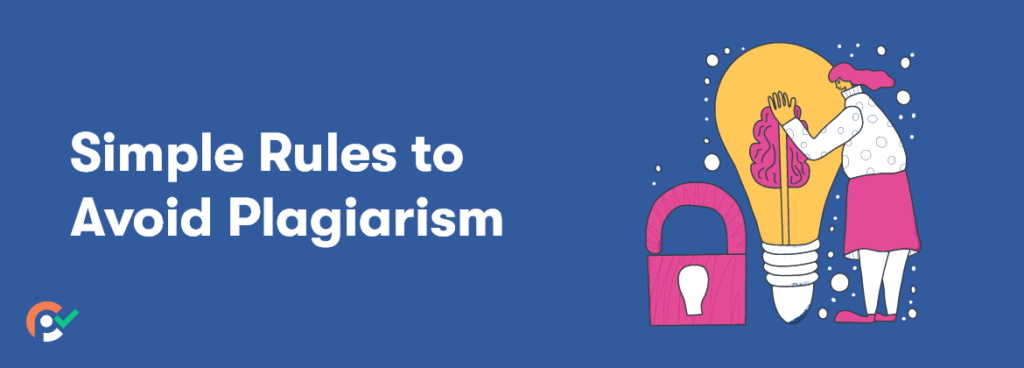
Simple Rules to Avoid Plagiarism
Plagiarism is an act of stealing someone’s words or ideas and presenting them as your own without giving proper credits to the original author. This definition of plagiarism is quite easy to understand, but people still prefer plagiarizing over creating unique content. It is mainly because they are unaware of the nuisance that comes with plagiarism. For a content writer, plagiarism can result in the destruction of his/her career, as this mark can leave you unemployed for a long period. On the other hand, the students involved in this act can get expelled from their institute or fail the entire semester.
If you’re looking forward to finding simple rules and ways that can help you steer clear of plagiarism, then you are at the right spot. In this article, we are going to discuss the top 5 ways to get rid of plagiarism and save yourself from its negative consequences. So, let’s get started without any further ado!
1. Cite While You Write
When it comes to a situation where using someone else’s words becomes inevitable, the writers should give proper credits to the original author by citing the copied words. In academic writing, the students are supposed to give references for their findings. It is obvious that they have to use the already published data to support their claims. To avoid plagiarism in such a case, you must properly cite while you write. You can use the popular citing techniques to create adequate citations and save yourself from conducting the crime of plagiarism.
2. Don’t Copy-Paste
Many people still live in a misconception that if they would copy something from the web and use it in their text as it will result in no harm. Unfortunately, it’s not true at all! You cannot copy-paste and think that you haven’t done anything wrong. The words you are copying are the hard work of another author; this act can offend the creator and lead you to face legal charges. If you’re writing on a topic that has limited information, and there is no chance to bring innovation, even then, copy-pasting isn’t the option you can opt for. In this case, you can use the online rephrase tool and present the same text with different tones and words.
3. Use Quotations
Using quotation marks is another useful way of avoiding plagiarism. The quotations represent that the words between inverted commas are taken from another source and don’t belong to you. But, it doesn’t mean that you can use quotations throughout the text, as it will leave a negative impact on the readers. Quotations can be used to present some ideas or support your findings. However, the major proportion of your text should contain your original words, not quotations.
4. Get Permission from the Author
Getting permission from the author to reuse their published work is an easy way of avoiding plagiarism. The writers can reach out to the famous authors through social platforms or email and wait for their response. It’s solely dependent on the author whether to accept your request and grant permission or deny it. If you don’t have intentions to misuse the author’s popularity, you can choose this way and get permission to use their work.
5. Avoid Self Plagiarism
Using your own words in another article is also termed plagiarism, and you must avoid it. Many times, writers have to write on a single topic multiple times, and this can lead them towards self-plagiarism. The usage of an advanced plagiarism checker can help you identify the sentences and phrases from your text that are plagiarized. This smart plagiarism detection utility provides you with accurate results in a matter of seconds. After identifying plagiarism, you can rephrase the words and keep doing it until the plagiarism checker displays that 0% plagiarism is left.
That’s it!
These are the top 5 ways you can rely on to avoid plagiarism and its negative consequences. The usage of plagiarism checker is inevitable for writers, as originality is an integral part of any kind of writing. This tool is a perfect solution for the detection and elimination of instances of plagiarism.







